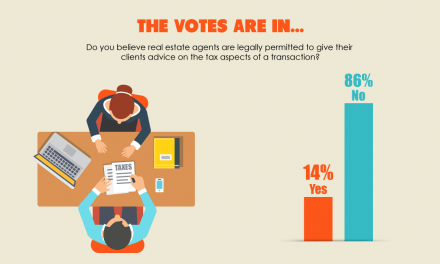This article discusses a property owner’s right to display signs advertising his property “For
Property owners can display
Consider an owner of a residential unit in a common interest development (CID), such as a condominium project, who places a “For Sale” sign in the window of his unit.
A neighbor in the project complains about the sign to the homeowners’ association (HOA) which manages the project. In response, the HOA makes a demand on the owner to remove the sign claiming the sign is a violation of the conditions, covenants and restrictions (CC&Rs) controlling conduct in the project.
Can an owner place a “For Sale” sign in the window of his unit where it can be seen by others when the display is in violation of the HOA’s CC&Rs or policy statements?
Yes! Owners of real estate and their brokers have the right to display “For Sale” signs of reasonable dimension and design on their property, or on property owned by others if they have their consent, in spite of title restrictions in the CC&Rs. [Calif. Civil Code §712]
The “For Sale” sign displayed on the property being sold by the owner or his agents, or displayed on other private property with that owner’s consent, may contain:
- advertising stating the property is for sale, lease or exchange;
- directions to the property;
- the owner’s or agent’s name; and
- the owner’s or agent’s address and telephone number.
However, the sign or location of a “For Sale” sign must not adversely affect public safety or impede the safe flow of vehicular traffic.
Further, any local governmental ordinance which attempts to bar or unreasonably restrict the placement of a real estate “For Sale” sign on the property for sale, or private property owned by others who have consented to the placement of a directional “For Sale” sign on their property, is unenforceable. [CC §713]
Reasonably located on-site signs
“For
For example, in a CID, the boundaries of a unit owned as the separate interest of a member of the CID are the walls, windows, floors and ceilings. If the CC&Rs of the CID do not state otherwise, the interior surface of the perimeter walls, floors, ceilings, windows, doors, outlets and airspace located within a unit are considered the owner’s separate interest. All other portions of the walls, floors, ceilings and real estate are part of the common area maintained and managed by the HOA. [CC §1351(l)]
Thus, the owner is entitled to display a “For Sale” sign on the interior side of the window of his condominium unit. The interior side of the window belongs to the owner and placing of the sign in the window is reasonable.
However, if the owner seeks to display the sign on the exterior wall or ground area surrounding his unit, the owner must obtain the permission of the HOA since the exterior walls and ground area are part of the common area, owned by others, specifically, the undivided ownership interest held by all the owners of units in the CID or the HOA. [CC §712]
Reasonable restrictions
Now consider a city which prohibits the display of all “For Sale” signs to stop perceived white-flight from a racially integrated city.
A property owner and his listing agent claim the ban is an unconstitutional interference with real estate sales, called a restraint on alienation, and violates the owner’s freedom of speech.
The city claims the sign prohibition is constitutional since it does not prohibit other ways in which to advertise property for sale, only those advertisements located on the property.
Is the city ordinance a reasonable restriction on the display of “For Sale” signs?
No! Prohibiting the display of “For Sale” signs is a violation of the First Amendment freedom of speech right since other methods of advertising real estate for sale are less effective and the ordinance prohibits the free flow of truthful commercial information. [Linmark Associates, Inc. v.
Further, cities and counties may not prohibit the placement of “For Sale” signs on private property, be it the property to be sold or property owned by others who consent to a directional sign being placed on their property. However, government agencies may determine the location, shape and dimensions of “For Sale” signs to ensure the signs do not affect public safety, including traffic safety. [CC §713]
Cities and counties restrict the display of “For Sale” signs on private property through ordinances, nuisance laws or building requirements. Restrictions may vary between residential and industrial zones, and among cities. Copies of “For Sale” sign ordinances controlling their use on private property are available through the city and county planning departments.
Additionally, HOAs cannot prohibit owners of units in a CID from displaying “For Sale” signs within the owner’s separately owned land areas if the sign complies with state law and local ordinances. [CC §712]
A copy of a HOA’s governing documents and CC&Rs controlling the dimensions and design of “For Sale” signs are available from the HOA.
Signs on right-of-ways
and alongside public highways
The display or placement of a “For Sale” sign on a private or public right-of-way, such as roadways, may be limited or regulated by local government agencies. [CC §713]
Further, a directional sign advertising real estate for sale, lease or exchange that is located on property other than the property advertised for sale and visible from a highway which is subject to the federal Highway Beautification Act requires a special permit be obtained from the Director of Transportation of the State of California before the sign may be erected. [
Locating signs off-site
Consider an agent who, on behalf of a seller of real estate, advertises the seller’s property by placing a directional “For Sale” sign on a neighbor’s property without first obtaining the neighbor’s permission.
The neighbor discovers the “For Sale” sign on his property and removes it. However, the seller’s agent continues to replace the sign on weekends without permission from the neighbor.
Does the neighbor have recourse against the broker?
Yes! Placing a sign on private property without the property owner’s permission is a misdemeanor public nuisance. Preventing a public nuisance is the responsibility of local government authorities on a complaint from the owner who does not consent to the placement of directional signs. [
Further, if a property owner or a real estate agent places a “For Sale” or a directional sign on public property without permission, such as on a sidewalk right-of-way or at the curbside, the placement is also a misdemeanor public nuisance. [Pen C §556]
Cities and counties often refuse or severely limit the granting of permission for placement of “For Sale” signs on public property, such as street corners, choosing to strictly enforce the penalties allowed by the California Penal Code. [Pen C §556]
When government agencies do allow “For Sale” signs, they are usually by a special permit and payment of use fees, and allowed only for the sale of parcels in a subdivider’s development.
Mobilehomes
A mobilehome owner can place a “For Sale” sign:
- in the window of his mobilehome; or
- outside the mobilehome facing the street.
Signs posted outside of the mobilehome can be of an H-frame or A- frame design and must face the street, but cannot extend into the street. [CC §798.70]
Signs in mobilehome parks may be up to 24 inches wide and 36 inches high, and may contain the name, address and telephone number of the mobilehome owner or the owner’s agent.
The right to display mobilehome “For Sale” signs extends to brokers, joint tenants, heirs or a representative of a mobilehome owner’s estate who acquires ownership of a mobilehome on the owner’s death.
Also, mobilehome owners and their agents can display an “open house” sign in the same locations as “For Sale” signs, if the mobilehome park does not prohibit open house signs.
Tubes or holders for leaflets with information on the mobilehome being advertised may be attached to either the “For Sale” sign or to the mobilehome. [CC §798.70]













